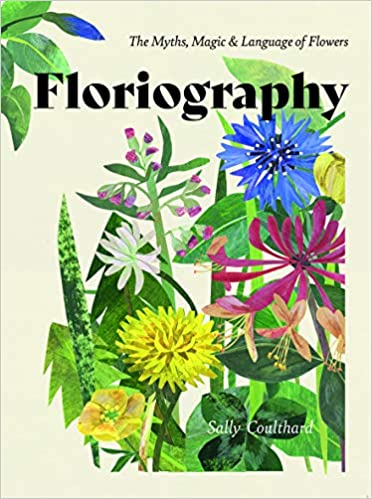
For thousands of years people have used flowers to communicate and author Sally Coulthard’s book, Floriography, delves into the ways different cultures and societies have used flowers to convey meaning and express emotion through the centuries. Shes explores history, literature and legend to shed light on the symbolic meaning of various plants that fascinated the people in both the Victorian era and modern times. Covering 50 plants, Coulthard, includes many old time favorites like daffodils and carnations while introducing the reader to less well known plants such as rue and mugwort.
Each plant has a section all to itself and is accompanied by at least one striking illustration done in bold vibrant colors. The section is introduced by a quote from literature that is followed by an informative discussion that reveals how the plant developed it symbolic meaning. Many aspects of the plants are covered such as superstitions, etymology, and their uses in medicine, art, and literature. Readers learn, for example, that the Latin genus name for buttercup,” Ranunculus” means little frog (because they tend to grow near water), and that daisy juice was fed to children in Elizabethan times to stunt their growth so they could be used to earn money at fairs and side shows. Even though many of the beliefs about plants in past times are false, they influenced the symbolic meaning that we hold today, and Coulthard’s book explains how this came to be.
Floriography offers a reading treasure trove for anyone who loves plants, flowers, literature, or history. With its colorful illustrations, engaging text, and in depth treatment, it serves up both visual and intellectual appeal. It is an excellent resource for understanding the symbolism of flowers.
To buy Floriography from Amazon, click here.